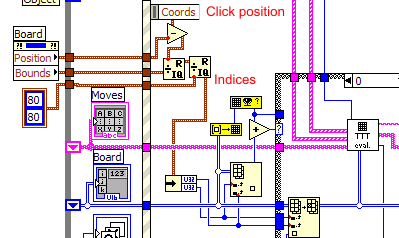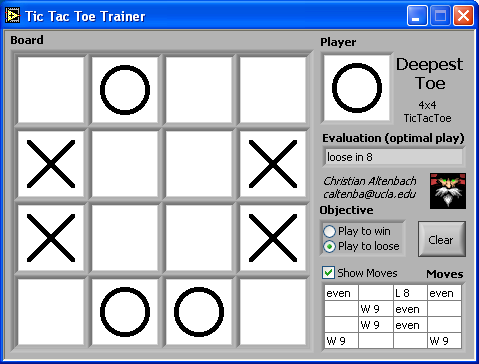- Subscribe to RSS Feed
- Mark Topic as New
- Mark Topic as Read
- Float this Topic for Current User
- Bookmark
- Subscribe
- Mute
- Printer Friendly Page
How do I get the index of the selected array element?
02-07-2007 09:31 AM
- Mark as New
- Bookmark
- Subscribe
- Mute
- Subscribe to RSS Feed
- Permalink
- Report to a Moderator
02-07-2007 10:16 AM - edited 02-07-2007 10:16 AM
- Mark as New
- Bookmark
- Subscribe
- Mute
- Subscribe to RSS Feed
- Permalink
- Report to a Moderator
I think there is no generic LabView solution, you have to get the Front panel position of the selected array element. I made an example...

Greets, Dave
P.S. btw. there was the reverse question answered here: http://forums.ni.com/ni/board/message?board.id=170&message.id=70107&query.id=6162
Message Edited by daveTW on 02-07-2007 05:20 PM
02-07-2007 10:29 AM
- Mark as New
- Bookmark
- Subscribe
- Mute
- Subscribe to RSS Feed
- Permalink
- Report to a Moderator
Also, using the suggested method, my example here shows a more generic solution. Note that the subVI there is also just an example and needs to expanded (to handle captions, for example, which after 7.0 you can't make invisible if you didn't manually show them).
If you want, you can find a more comprehensive example over at the LAVA forums' code repository.
___________________
Try to take over the world!
04-15-2008 10:06 AM
- Mark as New
- Bookmark
- Subscribe
- Mute
- Subscribe to RSS Feed
- Permalink
- Report to a Moderator
04-15-2008 10:32 AM - edited 04-15-2008 10:36 AM
- Mark as New
- Bookmark
- Subscribe
- Mute
- Subscribe to RSS Feed
- Permalink
- Report to a Moderator
Long ago, I used the following code to get the index of the clicked element of an array indicator as part of my Tic-Tac-Toe Analyzer.
All you need is one "subtract" and two "quotient&remainder" nodes. 😉
Remember you can do math on numeric clusters, so you can do the x and y at the same time to get the (row, column).

It's probably easiy to adapt it to your situation.
Click the following image to find the original posting: 😄
Message Edited by altenbach on 04-15-2008 08:36 AM

